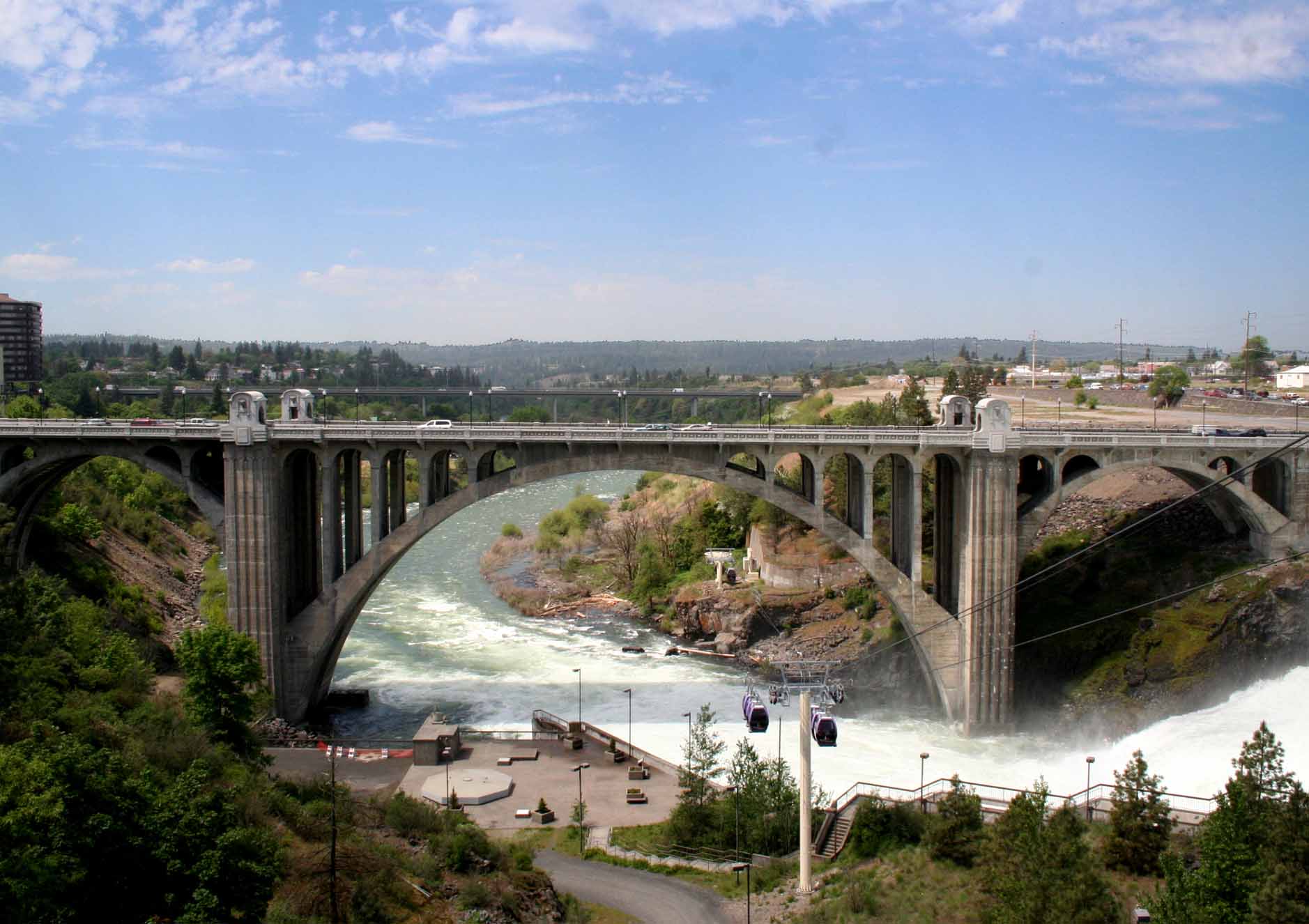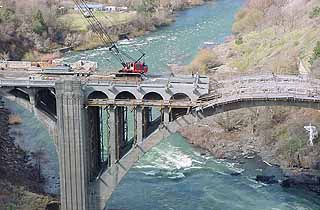
Grand Award Winner
Public Works Bridges

Monroe Street Bridge historic rehabilitation
Location: Spokane
Owner/developer:City of Spokane
Project team: Wildish Standard Paving, general contractor; Central Pre-Mix Concrete, concrete contractor; David Evans & Associates, structural engineer; Central Pre-Mix Prestress, ready-mix supplier
The Monroe Street Bridge in Spokane was reportedly the largest concrete arch bridge in the United States and third largest in the world when it was built in 1911.

The bridge’s deck and sidewalk structure was removed and rebuilt. |
A study in 1998 found that the 893-foot bridge had exceeded its lifespan, with reinforcing steel damaged from pollution, road salt and moisture, and concrete surfaces damaged from freeze-thaw cycles. The study also found the bridge would have to be closed in five years if it wasn’t rehabilitated.
Fixing the bridge involved removing and rebuilding the entire deck and sidewalk structure, spandrel arches and columns of the three main arch spans down to the arch ribs. Cracks and spalls on the existing concrete arches and main piers were repaired and sealed.
Crews used a precast sub-deck system, but most reconstruction was performed with cast-in-place concrete in order to replicate the structure’s original appearance.
The job included reconstruction of the north 180-foot-long arched viaduct approach, as well as a structural concrete overlay of the 135-foot-long south approach.
Micro-silica-modified concrete with polypropylene fibers was used for the new 5-inch-thick cast-in-place concrete traffic deck. The new deck has a high surface density and hardness to resist wear and cracking.
One of the construction challenges was to match the bridge’s details, which are irregular due to construction techniques used in 1911. Crews often encountered unknown concrete embedments because there was little documentation on the bridge.
Other challenges included building a foundation for a sidewalk overlook, creating special systems for cast-in-place sidewalks that project out from the arches, and using concrete to replicate the original bison skull art attached to the pavilions.
A total of 7,300 cubic yards of concrete, most of it cast-in-place, was used for the project.